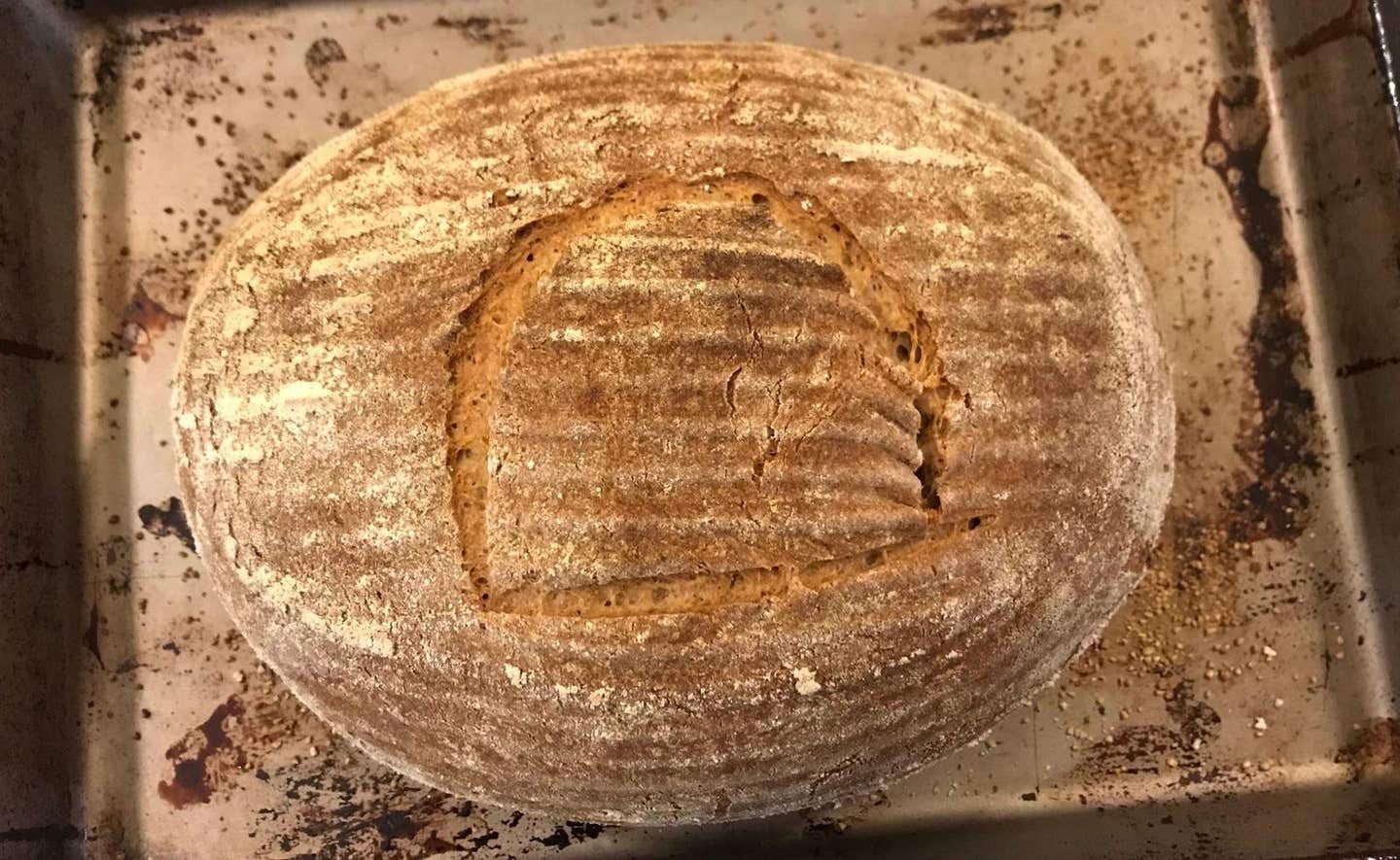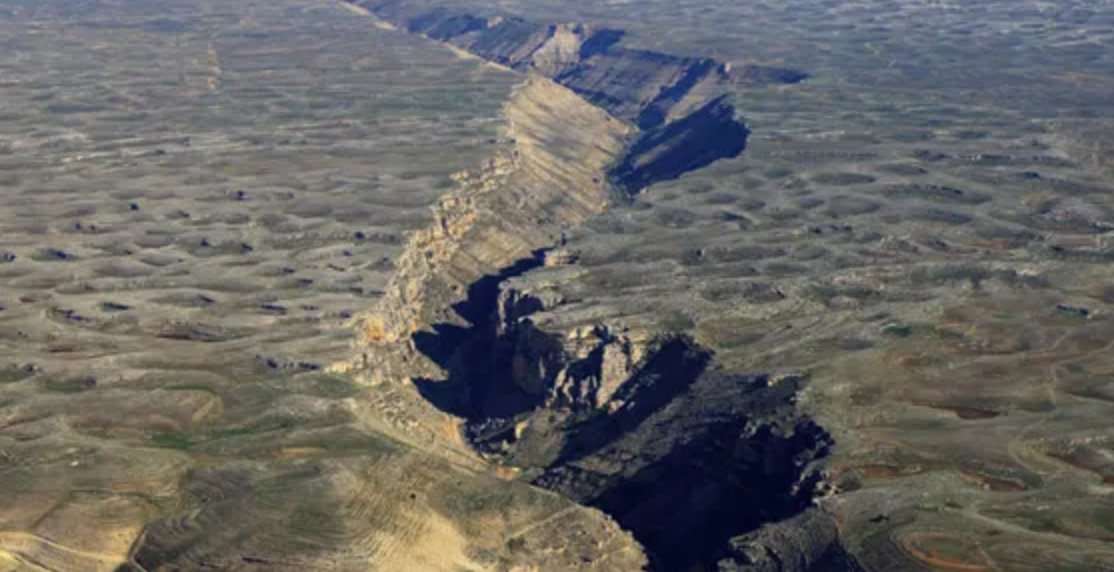Bread played a crucial role in shaping ancient civilizations
A major study has explained how bread wheat helped to transform the ancient world on its path to becoming the iconic crop that sustains a global population

Bread wheat, a crop that now feeds billions worldwide, played a crucial role in shaping ancient civilizations, allowing humans to settle and build societies. (CREDIT: CC BY-SA 3.0)
Bread wheat, a crop that now feeds billions worldwide, played a crucial role in shaping ancient civilizations, allowing humans to settle and build societies. A recent international study, involving institutions like KAUST and the John Innes Centre, sheds new light on the genetic journey that turned bread wheat into a global agricultural staple.
One of the study's lead authors, Professor Brande Wulff from KAUST, highlighted the significance of this discovery. He noted, "Our findings shed new light on an iconic event in our civilization that created a new kind of agriculture and allowed humans to settle down and form societies."
This event marks a turning point in human history, where agriculture began to evolve, leading to the establishment of stable communities and eventually, the rise of civilizations.
The secret to bread wheat's success lies in its genetic diversity, particularly the contribution of a wild grass called Aegilops tauschii. This unassuming weed provided the D-genome to bread wheat when it hybridized with early cultivated pasta wheat in the Fertile Crescent between eight and eleven thousand years ago.
This hybridization, occurring on the banks of the southern Caspian Sea, ignited an agricultural revolution. Bread wheat, with its higher gluten content, was eagerly adopted by farmers, spreading rapidly across diverse climates and soils.
However, the rapid spread of bread wheat posed a mystery. Wheat researchers have long puzzled over how this hybrid species, which should have struggled due to its genetic bottleneck, managed to thrive so widely.
Unlike its wild relatives, bread wheat experienced a significant reduction in genetic diversity, a consequence of the bottleneck effect. This phenomenon, combined with wheat's inbreeding nature—meaning it is self-pollinating—should have limited its adaptability outside its original region.
Related Stories
To unravel this mystery, an international collaboration, known as the Open Wild Wheat Consortium (OWWC), brought together researchers from various institutions. They assembled a diverse panel of 493 unique accessions, representing the geographical range of Aegilops tauschii from northwestern Turkey to eastern China.
From this panel, they selected 46 accessions, reflecting the species' traits and genetic diversity, to create a comprehensive genetic map, or Pangenome, of Aegilops tauschii.
Using this genetic map, researchers scanned 80,000 bread wheat landraces—locally adapted varieties—collected from around the world by CIMMYT. The data revealed that approximately 75% of the bread wheat D-genome is derived from a specific lineage (L2) of Aegilops tauschii, originating from the southern Caspian Sea. The remaining 25% of its genetic makeup comes from various lineages across the species' range.
Professor Simon Krattinger, another lead author of the study, emphasized the importance of this genetic diversity. He explained, "This 25% influx of genetic material from other lineages of tauschii has contributed and defined the success of bread wheat.
Without the genetic viability that this diversity brings, we would most likely not eat bread on the scale we do today. Otherwise, bread wheat today would be a regional crop—important to the Middle East but I doubt that it would have become globally dominant without this plasticity that enabled bread wheat to adapt."
The study also uncovered a previous discovery by the OWWC: a distinct lineage of Aegilops tauschii, restricted to present-day Georgia in the Caucasus region, which is about 500 kilometers from the Fertile Crescent. This lineage (L3) is significant because it provided bread wheat with one of the best-known genes for dough quality.
The researchers hypothesized that if this lineage had contributed to the bread wheat genome, it would be detectable in the landraces collected by CIMMYT.
Their hypothesis proved correct. Data analysis showed that CIMMYT wheat landraces from the Georgian region contained 7% L3 introgressions in their genome, seven times more than landraces from the Fertile Crescent. Professor Krattinger described how they used the L3 tauschii accessions as a “guinea pig” to track and trace these hybridizations.
He noted, "The data beautifully supports a picture where bread wheat emerges in the southern Caspian, then with migration and agricultural expansion it reached Georgia and here with gene flow and hybridizations with the peculiar, genetically distinct, and geographically restricted L3 accessions it resulted in the influx of new genetic material."
This discovery not only solves a long-standing biological mystery but also provides valuable resources for future agricultural innovations. The open-source Pangenome and germplasm made available by the OWWC are now being utilized by researchers and breeders worldwide.
These resources are helping to identify new disease resistance genes, which will be critical in protecting wheat crops from age-old agricultural threats like wheat rust. Additionally, scientists are exploring the wild grass species for climate-resilient genes, which could be bred into elite wheat cultivars, ensuring the crop's sustainability in the face of changing global conditions.
Collaboration played a pivotal role in this breakthrough. Professor Cristobal Uauy, a group leader at the John Innes Centre and one of the study's authors, remarked, "This work exemplifies the importance of global collaboration and sharing of data and seeds across countries; we can achieve so much by combining resources and expertise across institutes and across international boundaries."
This study underscores the value of international cooperation in tackling complex scientific challenges and highlights how shared knowledge can lead to significant advancements.
At the John Innes Centre, researchers worked closely with their colleagues from KAUST, utilizing bioinformatic approaches to track the levels of DNA contributed to bread wheat by the L3 lineage of Aegilops tauschii.
Professor Uauy also pointed out the importance of preserving genetic resources, stating, "The study highlights the importance of maintaining genetic resources such as the BBSRC-funded Germplasm Resources Unit here at the John Innes Centre, which maintains historic collections of wild grasses that can be used to breed valuable traits such as disease resistance and pest resistance into modern wheat."
The story of bread wheat is not just one of agricultural innovation, but also a testament to the power of genetic diversity and international collaboration. As you look at the bread on your table, it’s fascinating to think that its origins are rooted in ancient hybridizations, shaped by the migrations and agricultural practices of early humans, and enriched by the genetic contributions of a humble wild grass.
This intricate journey has allowed bread wheat to become a cornerstone of human civilization, feeding billions and continuing to evolve with the help of modern science.
Note: Materials provided above by The Brighter Side of News. Content may be edited for style and length.
Like these kind of feel good stories? Get The Brighter Side of News' newsletter.
Joshua Shavit
Science & Technology Writer | AI and Robotics Reporter
Joshua Shavit is a Los Angeles-based science and technology writer with a passion for exploring the breakthroughs shaping the future. As a contributor to The Brighter Side of News, he focuses on positive and transformative advancements in AI, technology, physics, engineering, robotics and space science. Joshua is currently working towards a Bachelor of Science in Business Administration at the University of California, Berkeley. He combines his academic background with a talent for storytelling, making complex scientific discoveries engaging and accessible. His work highlights the innovators behind the ideas, bringing readers closer to the people driving progress.



